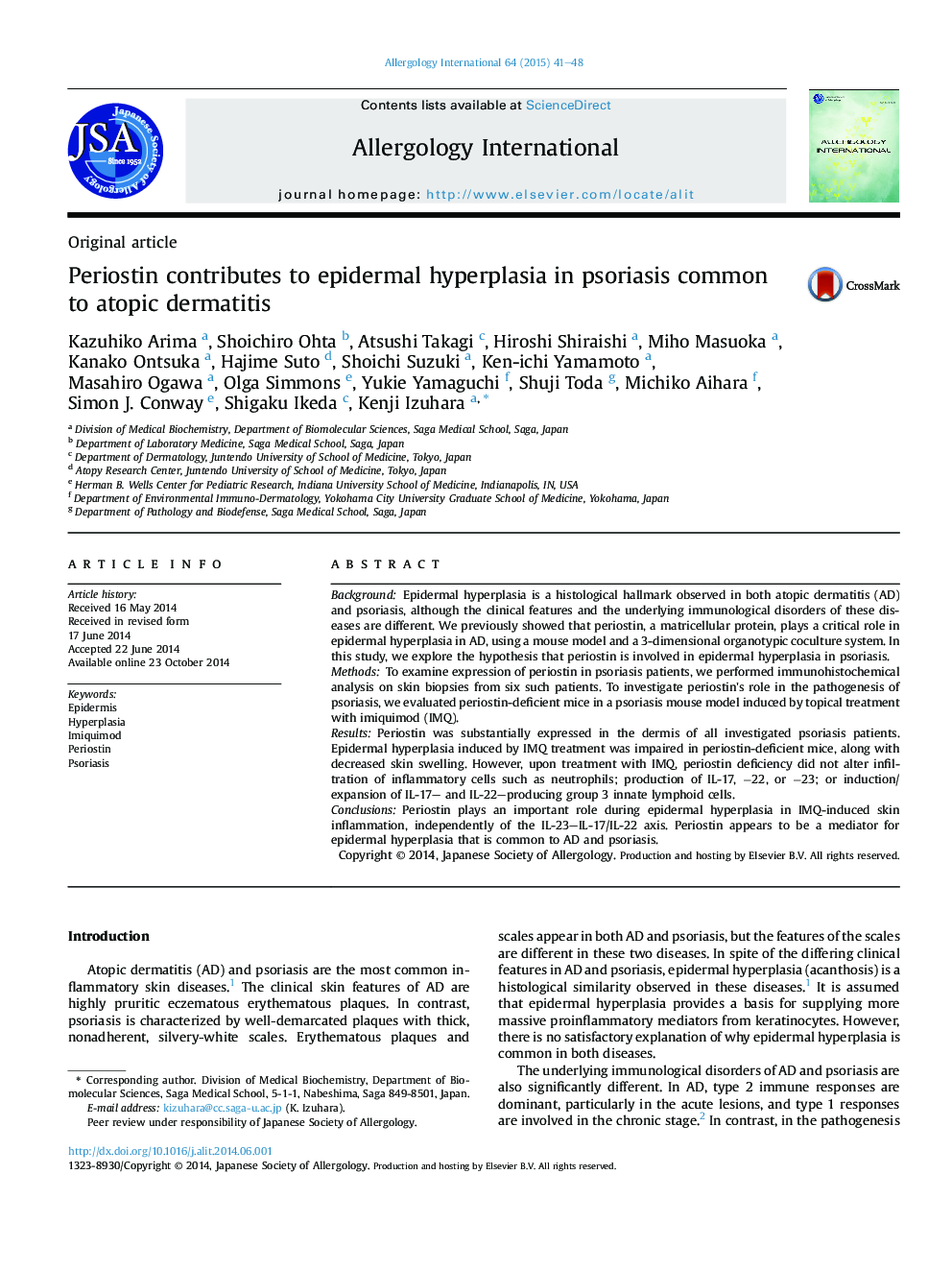| Article ID | Journal | Published Year | Pages | File Type |
|---|---|---|---|---|
| 3340700 | Allergology International | 2015 | 8 Pages |
BackgroundEpidermal hyperplasia is a histological hallmark observed in both atopic dermatitis (AD) and psoriasis, although the clinical features and the underlying immunological disorders of these diseases are different. We previously showed that periostin, a matricellular protein, plays a critical role in epidermal hyperplasia in AD, using a mouse model and a 3-dimensional organotypic coculture system. In this study, we explore the hypothesis that periostin is involved in epidermal hyperplasia in psoriasis.MethodsTo examine expression of periostin in psoriasis patients, we performed immunohistochemical analysis on skin biopsies from six such patients. To investigate periostin's role in the pathogenesis of psoriasis, we evaluated periostin-deficient mice in a psoriasis mouse model induced by topical treatment with imiquimod (IMQ).ResultsPeriostin was substantially expressed in the dermis of all investigated psoriasis patients. Epidermal hyperplasia induced by IMQ treatment was impaired in periostin-deficient mice, along with decreased skin swelling. However, upon treatment with IMQ, periostin deficiency did not alter infiltration of inflammatory cells such as neutrophils; production of IL-17, −22, or −23; or induction/expansion of IL-17– and IL-22–producing group 3 innate lymphoid cells.ConclusionsPeriostin plays an important role during epidermal hyperplasia in IMQ-induced skin inflammation, independently of the IL-23–IL-17/IL-22 axis. Periostin appears to be a mediator for epidermal hyperplasia that is common to AD and psoriasis.
